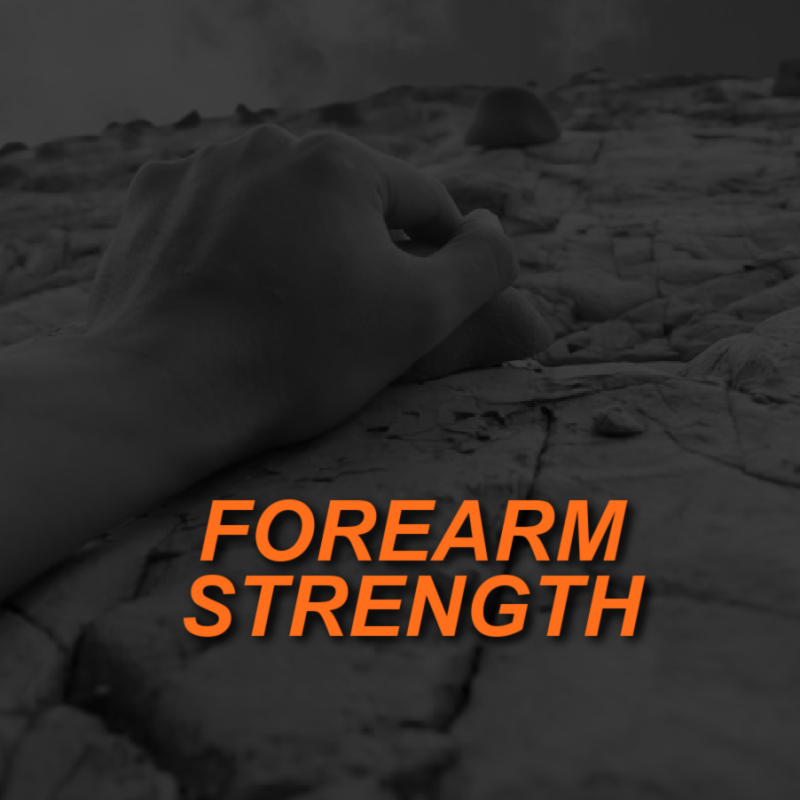
Exercises like pull-ups, rows, kettlebell swings, and bicep curls all involve a certain amount of forearm strength. Rock climbing, one of the fastest-growing sports in this country, requires an incredible amount of upper body power, forearm strength, and grip strength. Read on to learn why personal trainers must not neglect forearm strength when designing comprehensive workouts for clients.
Arm Yourself with Forearm Anatomy
The forearms contain more muscles than most of us realize, connecting to and impacting movements in the elbows, wrists, and hands. In terms of functional strength, forearm muscles assist in everyday tasks such as opening jars and carrying suitcases or heavy grocery bags. Sports-related movements such as those associated with golf and basketball also require strong forearms.
Focus on the forearm muscles (both flexors and extensors) in the gym rewards a client with strength and hypertrophy (including forearm strength) and may potentially reduce hand, wrist, and elbow pain arising from other conditions or overuse syndrome.
The Kinetic Chain Connection
The term kinetic chain originated in 1955, as orthopedic surgeon Dr. Art Steindler attempted to describe “individual joints and muscles working together as a group to perform any meaningful motion.” If a client engages in a pull-up, for example, he not only taps the primary movers (back, triceps) but also every muscle involved in the kinetic chain assisting the movement.
These encompass wrists, hands, forearms, biceps, and more. If a client lacks solid grip strength, this “weakest link” in the kinetic chain hampers him from deriving the most muscularity from his back workout. His hands will give out before allowing the major muscles to get appropriately activated.
Forearm Health and Epicondylitis
A condition known as epicondylitis refers to inflammation of the tendons, those cords of tissue that attach forearm muscles to the elbow. Significant inflammation in this area can progress from sore tendons to eventual elbow pain. Epicondylitis commonly occurs due to overuse of the forearm during sports such as golf and tennis, or from work-related activities involving repetitive gripping and/or lifting with force. By knowing how to properly train our clients toward an improvement in forearm strength, we offer them a better chance of reducing or eliminating such painful situations.
Forearm Strength and Wrist Relativity
One research study delved into the response of forearm musculature to combinations of wrist/forearm posture and grip force. Ten participants with no known forearm complications performed relative handgrip exercises (5%, 50%, 70%, and 100% of maximum) for flexed, neutral, and extended wrist positions. Another variable accounted for the three forearm postures: pronated, neutral, and supinated.
Scientists concluded that the greatest amount of flexor activity occurred in supination with a flexed wrist. Extensor activity seemed maximized with forearm pronation. Forearm rotation affected grip force only when the wrist was flexed, with a decrease when shifting from supination to pronation.
Key Exercises for Forearm Strength
Trainers can serve their clients’ needs for forearm strength by including some of these basic exercises in a workout program.
Farmer’s Carry /Farmer’s Walk: Using a weighted object such as a sandbag, kettlebell, dumbbell, weight plate or even a tire, have the client pick up the item and start walking for as long as possible (or the length of the gym floor 2x-3x). Once the forearm musculature feels fatigued almost to the point of failure, set the object down, shake out arms and hands for a few seconds, then repeat the process.
Pull-Ups/Chin-Ups: While very basic in nature, using various grip positions (front, overhand, neutral, sideways, reverse, or underhanded grip) can help train the forearms in a variety of ways. If possible, vary the thickness of the pull-up or chin-up bar to create an even greater challenge. For more advanced clients, try draping a towel around the bar and have them hang or perform pull-ups holding only the ends of the towel instead of the bar. This exercise ranks as one of the most difficult strength moves there are.
“Hang Out” at a Playground: Hanging from a jungle gym, or moving hand-over-hand across a set of monkey bars, will definitely set the forearm muscles afire. If a client favors a rock-climbing wall, bouldering will certainly build grip, hand and forearm strength. Bouldering involves climbing up to a jump height without the use of a harness or rope. This activity also improves one’s mobility and coordination when climbing.
Work the Landscape: Gardening and yardwork, in general, can strengthen hands and arms. Making use of shovels/rakes in the backyard, or even pulling weeds, will contribute to strong forearms and a powerful grip.
Carry Heavy Bags: Ask the checkout person at the grocery store to place your items in as few bags as possible, thereby guaranteeing that each bag will indeed feel heavy. This simple trick can work wonders at improving grip strength. Even when you feel the bags slipping or about to drop, challenge yourself to see how long you can hold on (just do not drop the bag containing the carton of eggs).
Pinch Plate Hold: Hand a client a weight plate and instruct him to pinch it between his fingers, letting gravity provide the challenge. See how long he can maintain his grip.
Finger Curl: Sitting on the edge of a bench, have the client hold a barbell with both hands, forearms resting on thighs, palms facing up. As s/he lowers the bar as far as possible, then catches it and curls the bar back up as high as possible while closing the hands, s/he will feel a tremendous pull in the forearms. Repeat 5-10x.
A lack of forearm strength and power can compromise one’s ability to build strength in other parts of the body. Stronger forearms enable individuals to grip with confidence, allowing more muscles to generate a greater “squeezing force”. This adaptation serves us well not only during workouts but also in many activities of everyday life.
References:
https://pubmed.ncbi.nlm.nih.gov/21778674/
https://pubmed.ncbi.nlm.nih.gov/26830913/
https://www.osmosis.org/answers/epicondylitis
https://pubmed.ncbi.nlm.nih.gov/16950725/
https://pubmed.ncbi.nlm.nih.gov/12775491/
https://www.issaonline.com/blog/index.cfm/2020/how-to-get-bigger-forearms-with-a-few-simple-exercises
https://www.scientificamerican.com/article/the-importance-of-forearm-strength-and-how-to-build-it/
https://www.quickanddirtytips.com/health-fitness/exercise/forearm-strength?utm_source=sciam&utm_campaign=sciam
rockclimbingcentral.com/is-bouldering-harder-than-rock-climbing/






